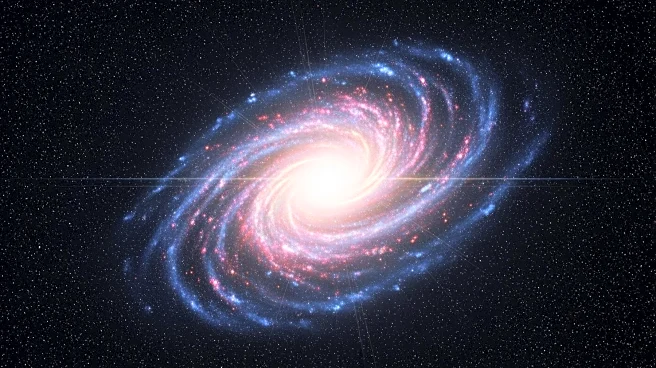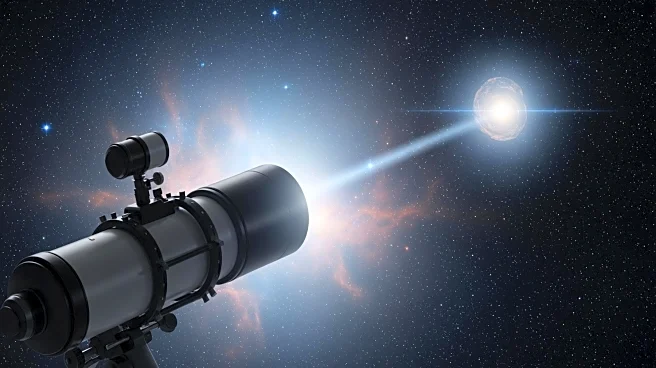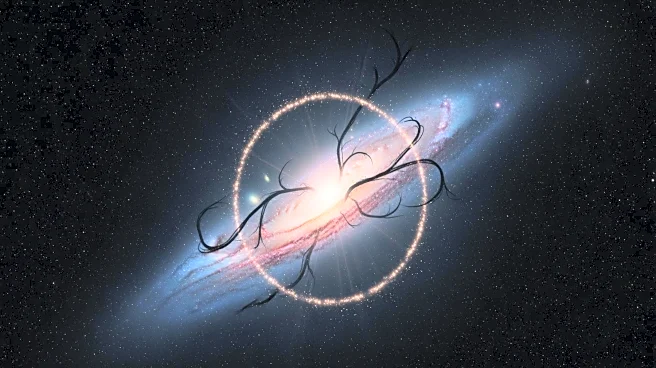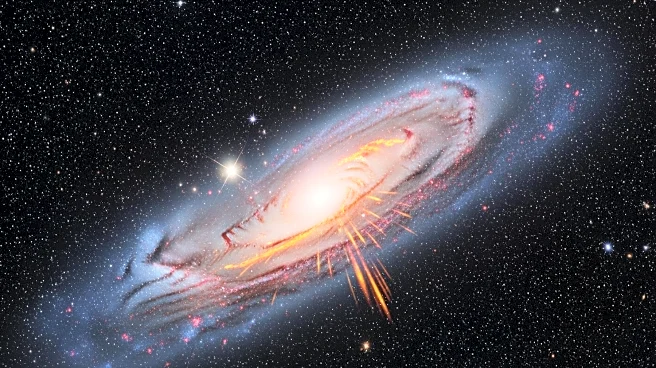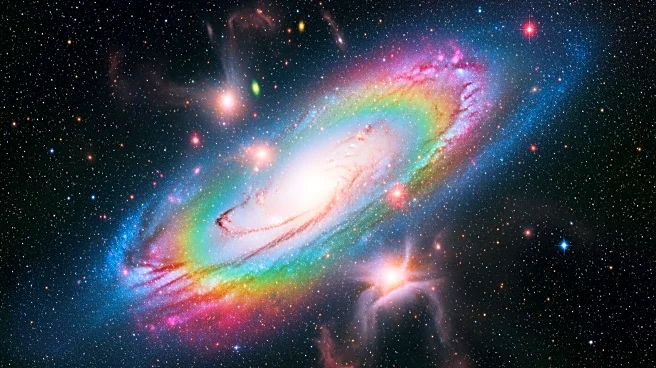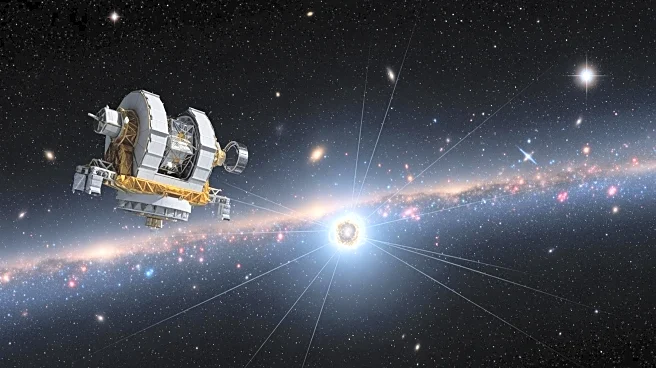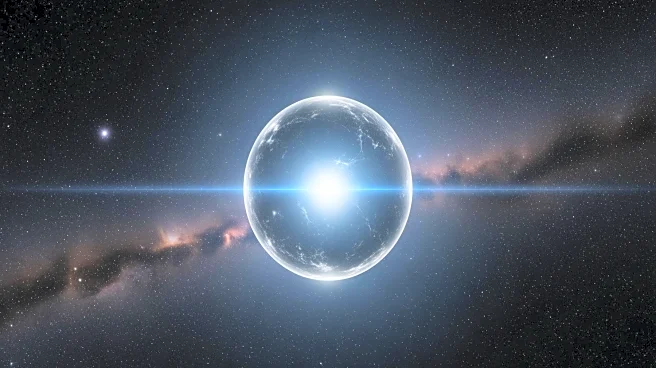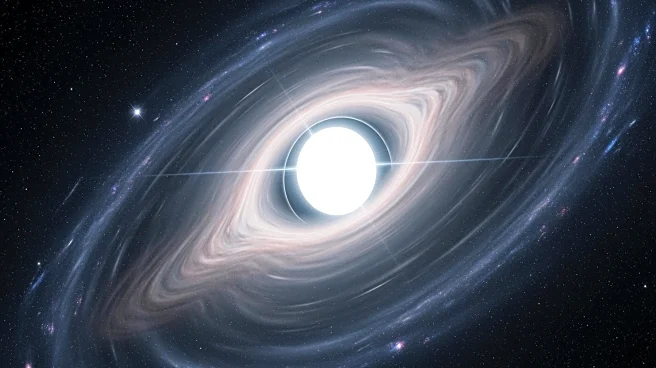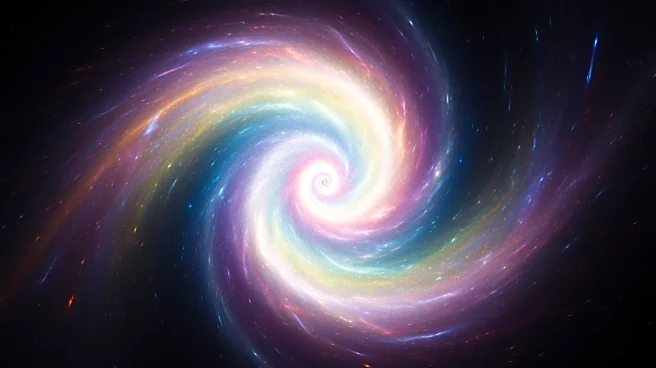What's Happening?
A gamma-ray glow from the Milky Way's center, known as the Galactic Center GeV Excess (GCE), may be evidence of dark matter particles annihilating each other. Recent simulations suggest this glow could
be due to dark matter annihilation or millisecond pulsars, with a slight edge for the dark matter hypothesis. The GCE has puzzled astronomers since its discovery in 2009, with two main theories: dark matter annihilation and emissions from millisecond pulsars. The study used simulations to explore the shape and distribution of the GCE, finding that a flattened dark matter halo could produce a boxy gamma-ray glow.
Why It's Important?
Understanding the source of the GCE could provide critical insights into dark matter, a mysterious component of the Universe that influences galaxy formation and structure. Confirming dark matter as the source would be a significant breakthrough in astrophysics, potentially leading to new detection methods. This research could also refine our understanding of the Milky Way's structure and the role of dark matter in cosmic phenomena. The findings may guide future observational strategies and the development of new technologies to study the Universe.
What's Next?
Future observatories like the Cherenkov Telescope Array and the Southern Wide-field Gamma-ray Observatory are expected to help distinguish between the dark matter and pulsar hypotheses. These facilities could provide more detailed observations, potentially confirming one theory over the other. If neither hypothesis is confirmed, it would present an even greater mystery, prompting further research into alternative explanations for the GCE.
